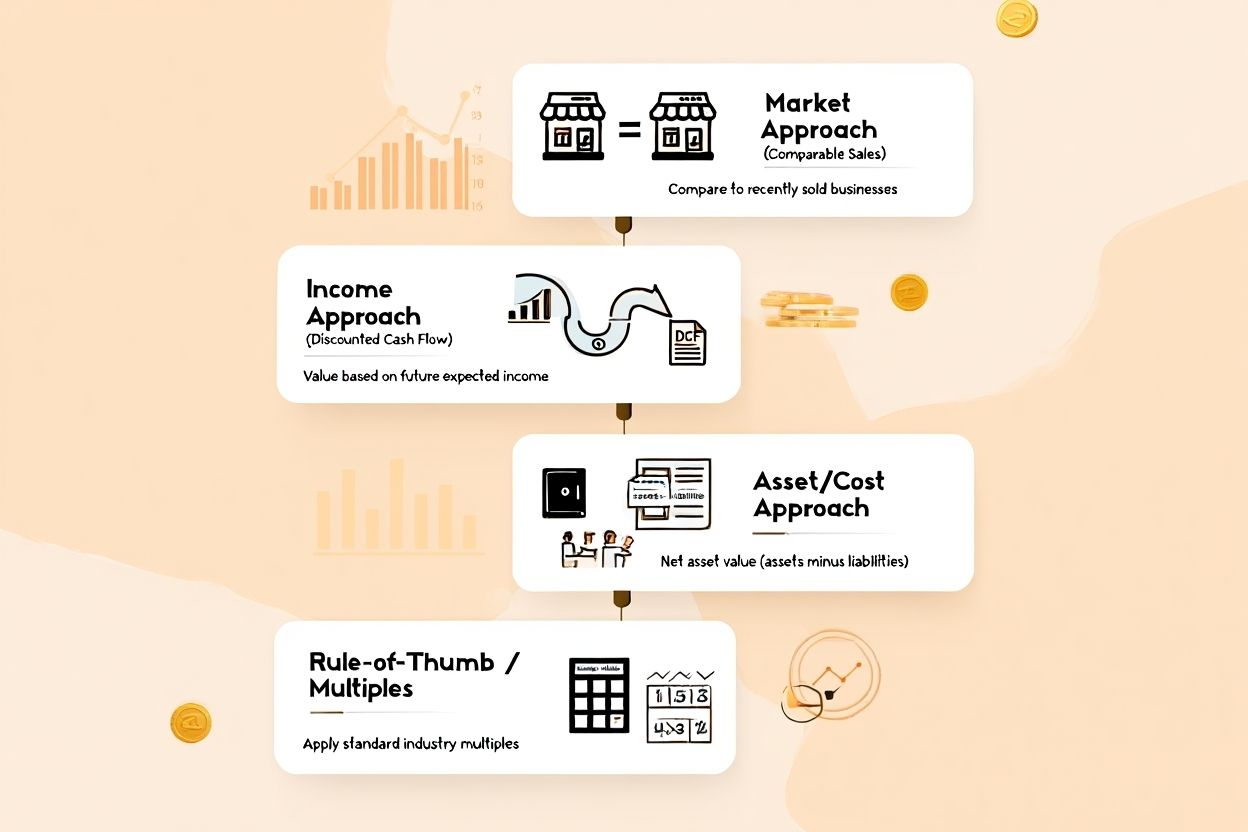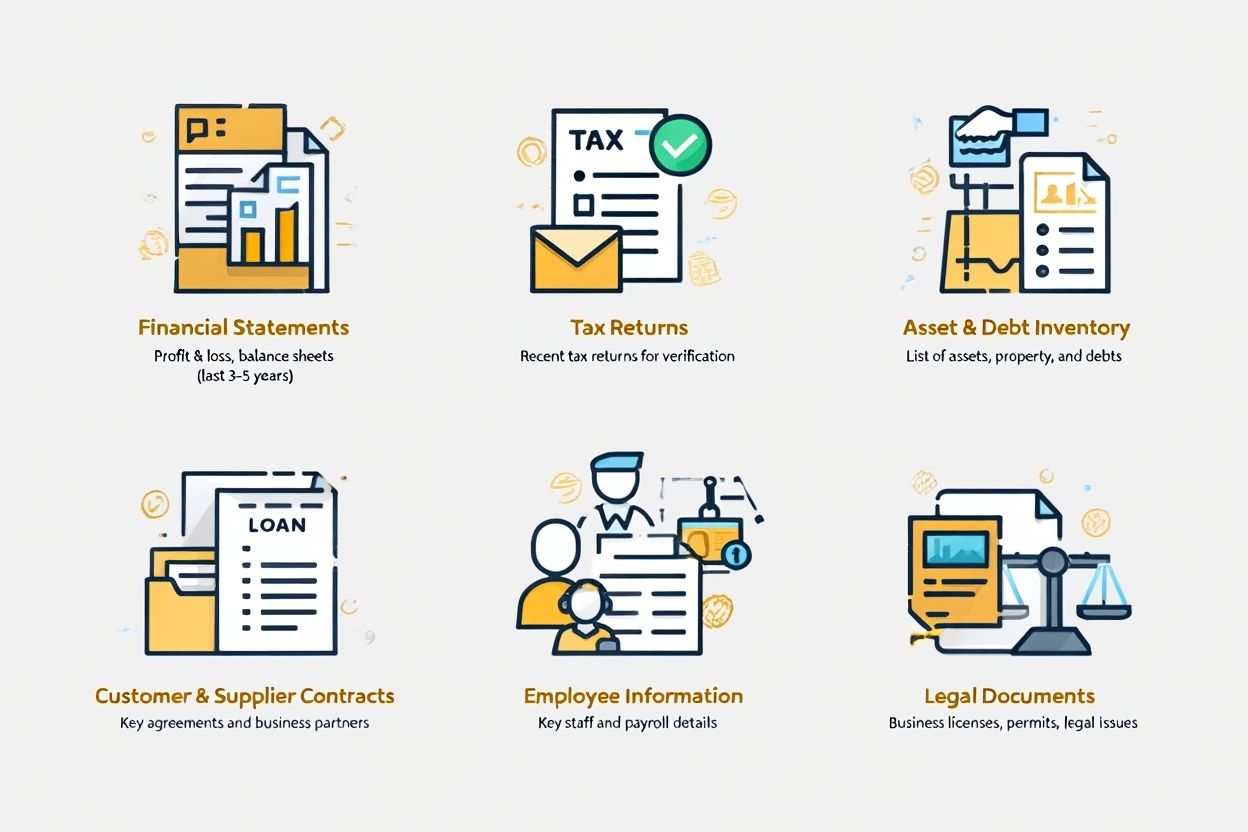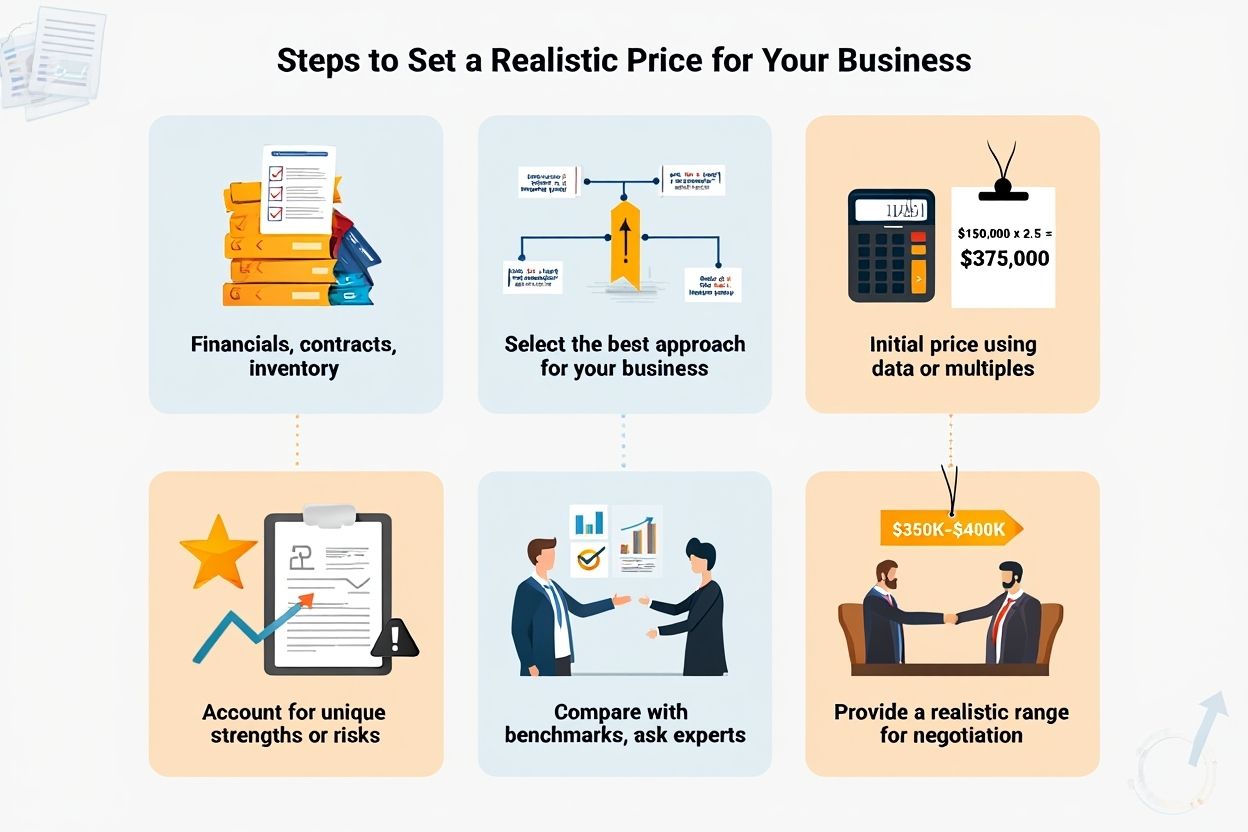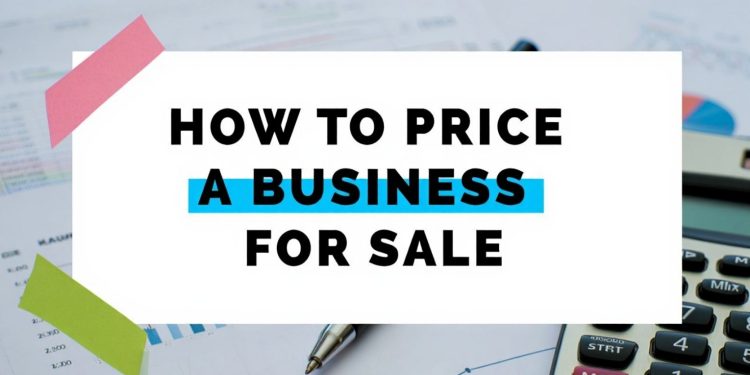If you’re unsure how to price a business for sale correctly, following a proven process is essential for both buyers and sellers to reach a fair agreement.
How to price a business for sale is a crucial question for any business owner planning to exit, retire, or attract investors in 2025. Setting a fair and realistic price means understanding your company’s true worth, not just picking a number. This process is directly tied to business valuation: a careful assessment of what your business is worth based on facts and data, not just guesswork.
A correct price helps sellers maximize value while giving buyers confidence in what they’re getting.Imagine you own a coffee shop and want to sell it. Pricing helps you understand how much your shop is worth based on sales, assets, and what similar shops have sold for. For buyers, it shows whether the price is fair and matches expected returns .People often price a business when they’re ready to retire, raise capital, attract investors, or settle an estate.
In this guide, you’ll learn how to price a business for sale, why it’s essential to get it right, the methods used, and practical steps to arrive at an accurate price.
1. Why accurate pricing and valuation matters
Getting the price wrong can cause big problems. If you price a business too high, it may stay on the market for too long, pushing buyers away and hurting your reputation. On the other hand, pricing it too low means you might lose out on money you deserve and regret selling too cheaply.

Here are some key risks of improper pricing:
- Overpricing: Longer selling time, fewer interested buyers, possible loss of trust.
- Underpricing: Losing potential profits, feeling rushed, missing future growth potential.
Emotions often make pricing harder. Sellers might be attached to their business or feel pressure to sell quickly, leading to poor pricing choices. These challenges affect small, medium, and large businesses alike.
Understanding why accurate pricing matters helps you avoid these pitfalls and lays the foundation for fair negotiations and smooth sales.
2. How to price a business for sale: Core valuation methods explained
How to price a business for sale starts with choosing the right valuation method. There are four main approaches used by professionals and owners alike. Each method has unique strengths and works best for certain types of businesses.

The summary table below highlights each method, followed by practical explanations, selecting the right valuation approach is the foundation of how to price a business for sale accurately in any industry.
| Method | Definition | Best Used For | Example | Pros | Cons |
|---|---|---|---|---|---|
| Market Approach (Comparable Sales) |
Compares your business to similar ones recently sold. | Businesses in active markets with many comparables. | Business sold for $500K; your similar business valued similarly. | Simple, market-driven. | Hard if no comparable sales nearby. |
| Income Approach (Discounted Cash Flow) |
Values business based on future earnings discounted to today’s value. | Stable businesses with predictable income. | Projected $50K yearly profit discounted at 10% rate. | Reflects future potential. | Requires forecasting skills; sensitive to assumptions. |
| Asset/Cost Approach | Focuses on net asset value (assets minus liabilities). | Asset-heavy businesses or startups. | Assets worth $300K minus debts of $50K = $250K value. | Clear, based on actual figures. | Ignores future income or goodwill. |
| Rule-of-Thumb / Multiples | Uses industry-standard multiples of earnings (e.g. EBITDA, SDE). | Small to medium businesses with known sector norms. | $150K Seller’s Discretionary Earnings x 2.5 = $375K | Quick, widely accepted. | Multiples vary widely; can be misleading if used alone. |
For the most accurate results, combine two or more methods and consult with a qualified advisor to account for unique factors in your business.
2.1. Market approach (Comparable sales)
This method compares your business with others like it that have been sold recently. It’s like checking house prices in your neighborhood before setting your own. For example, if a similar retail store sold for $400,000, and your store is in a similar condition and location, you might price yours around that amount.
Pros: Easy to understand, based on real sales data.
Cons: Hard to find exact matches; markets with fewer sales offer limited data.
Always use recent, local sales when possible. If no perfect match exists, adjust for size, revenue, and growth.
2.2. Income approach (Discounted cash flow)
The income approach looks at how much money the business will make in the future and adjusts that amount to today’s dollars. For example, if you expect the business to earn $60,000 per year for the next five years, you use a discount rate (say 8%) to calculate what those future earnings are worth now.
Pros: Considers future earning power and is good for stable businesses.
Cons: Requires estimates that can be uncertain; small changes in assumptions impact value.
This approach is favored by investors buying established, steady businesses, especially in service or tech sectors.
2.3. Asset/Cost approach
This method adds up all the business’s assets (like equipment, inventory, property) and subtracts what it owes. For example, if assets total $500,000 and debts are $100,000, the net value is $400,000.
Pros: Straightforward; best for companies with tangible assets.
Cons: Does not account for future income or brand value.
Commonly used in manufacturing, retail, or for liquidation sales.
2.4. Rule-of-thumb and multiples method
This method uses common industry multiples applied to key earnings figures. For example, if a consulting firm earns $100,000 Seller’s Discretionary Earnings (SDE) and the industry multiple is 3, the value estimate is $300,000.
Pros: Quick and based on industry standards.
Cons: Multiples vary widely; not precise alone. Benchmark multiples can be found via business brokers, industry reports, or valuation organizations.
Always cross-check multiples with current market data or seek input from a business broker.
3. What you need before pricing: Business valuation preparation checklist
A key part of how to price a business for sale is making sure your financial statements, contracts, and legal documents are well-organized and transparent.
Before you can price a business for sale accurately, you need the right information prepared and organized. This not only speeds up the process but also builds trust with potential buyers.

- Financial statements: Profit and loss, balance sheets from past 3–5 years. Buyers want proof of income.
- Tax returns: Verify reported earnings and avoid surprises.
- Asset and debt inventory: Clear list of equipment, property, loans, and obligations.
- Customer and supplier contracts: Show business stability and potential risks.
- Employee information: Details on key staff and payroll.
- Legal documents: Licenses, permits, or any pending legal matters.
Having these documents ready builds buyer confidence and leads to a more accurate valuation. Without clean, organized data, buyers may doubt your asking price.
Downloadable checklists can help keep this task organized.
If this article interests you, why not check out our related articles? Cheapest business to start from home in 2025: A complete guide for budget Entrepreneurs
4. Step-by-step guide: How to price a business for sale
Follow these steps to arrive at a realistic and defendable price for your business, here is a simple process to follow when pricing your business:

- Gather and organize documents: Collect all financials, contracts, and inventory lists.
- Choose your valuation method: Decide which approach fits your business best (market, income, asset, or multiples).
- Calculate base value: Use formulas or data to arrive at an initial price. Example: $150,000 SDE x 2.5 multiple = $375,000.
- Adjust for special factors: Consider owner dependency, exclusive contracts, or market trends that affect value positively or negatively.
- Cross-check: Compare your result with benchmarks and ask other professionals for opinions.
- Set a price range: Rather than one fixed number, provide a realistic range to allow negotiation room.
Pro Tip: Always document your calculations and keep backup data. Transparency increases buyer trust and can help justify your asking price during negotiations.
Following these steps ensures you’re prepared to answer any buyer’s questions and strengthens your negotiating position.
5. Building trust and credibility in your valuation (E-E-A-T in action)
Buyers and investors rely on credible information before making offers. Showing where your data comes from builds trust. For instance, referencing industry reports, accountant-prepared financials, or valuation software outputs signals expertise and reliability.
Trust signals to include:
- Independent accountant reviews or letters confirming financial data.
- Use of recognized valuation tools or industry multiples.
- Clear explanations of assumptions behind projections.
- Professional qualifications of anyone who helped prepare the valuation.
Real Example: In 2024, a family-owned bakery in Chicago used a local CPA to audit its last three years of statements. By including this audit and citing multiples from the International Business Brokers Association (IBBA), they attracted multiple offers and sold above their initial asking price.
Being transparent and supporting your numbers with data will help prevent buyer objections and speed up the deal.
6. Common mistakes, pitfalls, and what to avoid when pricing a business
Even experienced sellers can make costly errors when pricing a business. Avoid these common mistakes:
- Emotional pricing: Setting price based on feelings rather than facts. This can scare buyers or cause missed opportunities.
- Ignoring debts and liabilities: Forgetting to factor in loans or pending obligations leads to overpricing.
- Overestimating goodwill or potential: Valuing hopes instead of current performance can mislead buyers and cause deal failures.
- Relying only on online calculators: These tools ignore unique factors and often provide rough estimates only.
- Missing contracts or legal obligations: Omitting key agreements risks surprises during due diligence.
- Not adjusting for risk factors: High customer concentration or regulatory risks need to be reflected in lower valuations.
For example, one small IT firm overvalued itself by ignoring a major client who was ending their contract, leading to a failed sale.
Pro Tip: Ask a professional to review your price and assumptions before going public, fresh eyes often spot missed risks or opportunities.
Avoid these pitfalls by staying objective, getting professional input when needed, and using detailed data.
7. When to get professional help, and who to trust
Some situations require expert valuation to ensure fairness and compliance. Consider professional help if your business has complex ownership, legal disputes, high value, or operates in regulated industries.

Who to turn to:
- Certified Public Accountants (CPAs): Review financials, help prepare tax information.
- Certified Appraisers: Provide formal valuations, especially for larger businesses.
- Business Brokers: Assist in pricing and selling, especially for small to medium businesses.
Warning: Be cautious of professionals who promise “top dollar” with no credentials. Always verify their background and ask for references from previous clients.
The right advisor adds credibility, saves you time, and may help you achieve a higher sale price.
8. Glossary: Key business valuation terms
Understanding valuation terms is essential when learning how to price a business for sale. Here are some of the most important terms you’ll encounter:
-
EBITDA (Earnings Before Interest, Taxes, Depreciation, and Amortization): A financial metric that shows a business’s operating profitability, often used to compare businesses across industries.
-
SDE (Seller’s Discretionary Earnings): The total financial benefit available to a business owner, including net profit, salary, perks, and discretionary expenses. Commonly used in small business valuations.
-
Goodwill: The intangible value of a business, such as brand reputation, customer loyalty, and relationships, that adds value beyond physical assets.
-
Comps (Comparables): Similar businesses that have recently sold, used as benchmarks to estimate a fair selling price.
-
Multiples: Industry-standard factors (such as a multiple of EBITDA or SDE) applied to a company’s earnings to estimate its market value.
-
DCF (Discounted Cash Flow): A business valuation method that calculates the present value of expected future cash flows, using a specific discount rate.
Familiarize yourself with these terms before starting the business sale process, using the right language helps you communicate confidently with buyers, brokers, and professional advisors.
9. FAQs: How to price a business for sale
Q1: What is the most common method to price a small business for sale?
A: The rule-of-thumb and market approach are most common for small businesses, using comparable sales or industry multiples.
Q2: Can I price my business myself or do I need a professional?
A: While you can start with online tools, professional advice is strongly recommended for accuracy and credibility.
Q3: What is Seller’s Discretionary Earnings (SDE)?
A: SDE is the owner’s profit including salary, benefits, and non-cash expenses, often used to value small businesses.
Q4: How does future growth impact my business’s price?
A: Buyers will pay more if the business shows stable and predictable growth; the income approach captures this best.
Q5: Why do buyers want to see my tax returns?
A: Tax returns verify reported income and highlight any financial red flags or inconsistencies.
Q6: How long does it take to sell a business once priced?
A: It depends on price accuracy, demand, and industry. Most small businesses take 6–12 months to sell.
Q7: Are online valuation calculators reliable?
A: They provide a starting point, but real prices depend on market data, unique risks, and professional input.
10. Conclusion
How to price a business for sale in 2025 demands careful preparation, a clear understanding of valuation methods, and the discipline to avoid overpricing or underpricing. To ensure a successful sale, keep these steps in mind:
-
Gather and organize all your business data, from financial statements to contracts, to support your valuation.
-
Choose the most suitable valuation approach for your business, whether it’s the market, income, asset, or multiples method.
-
Cross-check your price against industry benchmarks and seek feedback from trusted professionals.
-
Build trust and transparency by documenting your process and citing credible sources.
-
Avoid common mistakes such as emotional pricing or overlooking debts and liabilities.
When you follow this process, you’re more likely to attract serious buyers, negotiate confidently, and achieve a fair outcome.
Ready to start? Download your valuation checklist, and connect with a professional today to make your sale a success!
Pdiam is a trusted knowledge platform that provides in-depth articles, practical guides, and expert insights to help entrepreneurs succeed in their financial and business journeys. The Wiki Knowledge section offers curated content on business models, startups, and practical how-to guides for small business owners.












